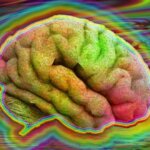A research team at the University College London have demonstrated a new effective method of alleviating a hallmark symptom of Parkinson’s disease. The findings were publicized in the peer-reviewed journal Nature Communications.
In their new findings, the UCL research team was able to use electrical pulses to inhibit the onset of tremors caused by neurodegenerative diseases, like Parkinson’s disease.
According to researchers: “Here, we first report a method to track the phase of neural oscillations in real-time via endpoint-corrected Hilbert transform (ecHT) that mitigates the characteristic Gibbs distortion.”
The study follows by stating, “We then used ecHT to show that the aberrant neural oscillation that hallmarks essential tremor (ET) syndrome, the most common adult movement disorder, can be transiently suppressed via transcranial electrical stimulation of the cerebellum phase-locked to the tremor. The tremor suppression is sustained shortly after the end of the stimulation and can be phenomenologically predicted.”
“Finally, we use feature-based statistical-learning and neurophysiological-modelling to show that the suppression of ET is mechanistically attributed to a disruption of the temporal coherence of the aberrant oscillations in the olivocerebellar loop, thus establishing its causal role,” it also states.
During their experimentation of using a non-invasive form of electrical stimulation, targeting a particular region of the brain known as the cerebellum, researchers uncovered that a reduction in tremors was possible through means of aberrant oscillatory synchrony.
As many as 11 human participants received the experimental treatment using electrical stimulation targetting the cerebellum, demonstrating how a reduction of symptoms lasted for an extended period of time after stimulation.
“Tremors are caused by abnormal synchronization in the motor areas of the brain but the biological processes underlying them are still not well understood,” said one co-author of the study in a news release.
“By targeting the temporal pattern of the brain’s abnormal synchronization, we may be able to treat it, non-invasively, despite the limited knowledge of the precise causes.”


